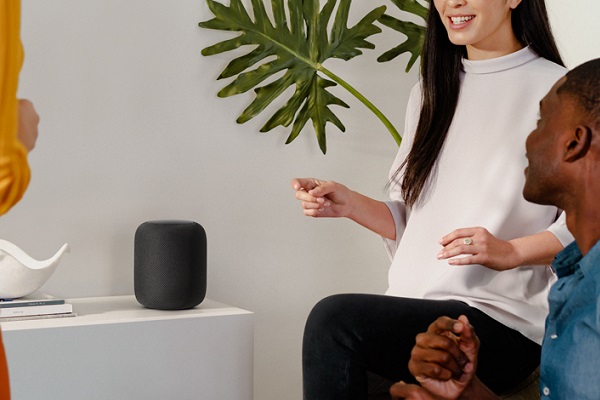Apple HomePod Plays Catch-Up to Amazon and Google with Upcoming Multi-User Mode

Apple’s hardware event this week was light on news concerning Siri and voice technology. But according to the Homepod product page, the company is making some important updates to its smart speaker software this fall.
Open to New Voices
The most significant update looks to be the addition of a multi-user recognition feature. The HomePod will be able to recognize up to six different people’s voices and the Siri voice assistant will personalize how it responds depending on who is speaking. Individual reminders and grocery lists, music playlists, and personal messaging will all be possible with the new update.
Apple is also making it easier to quickly switch which device is playing audio with a music handoff feature. When an iPhone playing music is brought near the HomePod, a notification on the phone will ask if the music should switch to playing from the speakers instead. The handoff feature is arriving right close to when Siri is adding support for around 100,000 radio stations, playable from the smart speaker or on an iPhone. HomePods are additionally getting a new Ambient Sounds feature to play natural sounds or white noise directly from the smart speaker. Unlike Nest Home or Echo, this is a first-party feature integrated into the HomePod independent of a smartphone connection. The radio stations are launching September 30, while the rest of the new features don’t have a precise release date beyond some time this fall.
Apple Late to Multi-User
Though many HomePod users will likely be happy for the multi-user capability, Apple is behind Amazon and Google in implementing this feature. Google Home, now Nest Home, added the ability to recognize voice identities over two years ago, not long after launching the device. Google Home users could create voice profiles with personal connection to other accounts and music playlists, and get personalized response from the device. Amazon Echo devices added the ability to distinguish different voices to Echos just a few months later.
Why it took Apple so much longer to reach this point isn’t clear, especially since their competitors already had the feature in place before the HomePod even launched. It may have been simply about what Apple was prioritizing for Siri, a technical issue, or something else entirely. Having a multi-user feature is important for any voice assistant’s future, however, if they want to make their voice assistant a continuous part of people’s day.
Follow @voicebotai Follow @erichschwartz
Alexa Can Now Recognize Your Voice, Provide Personalized Content








